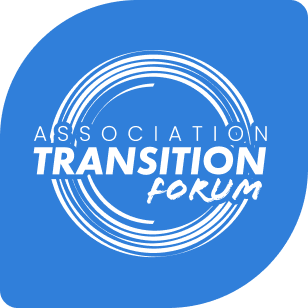3 Questions to Gilles Lecaillon, Founder of Ecocean
TF - What issues does the Biohut® address?
GL - Since the 1950s, the number of endangered marine species has been increasing and the natural capital of coastal resources (fish, crustaceans, mollusks...) has been decreasing significantly. The causes of this phenomenon are numerous: among them we can mention climate change, the appearance of invasive species, overexploitation of resources, pollution and finally the destruction of habitats or the artificialization of the coastline, which is known to shelter essential habitats in the life cycles of marine animals.
To fight against this phenomenon of disappearance of certain marine species and in particular the reduction of coastal nursery habitats, my team has proposed, after several years of research, operational solutions of ecological restoration for marinas and commercial ports.
Shoreline and nearshore areas are increasingly affected by human activities and many young coastal marine animals present in these shallow areas are facing a lack of natural habitats. In the life cycle of coastal marine animals, the larvae or post-larvae (newborns) return to this coastline and look for a favorable habitat for their development (nursery). However, these habitats are often degraded/destroyed, so there was a need to act!
TF - How does the Biohut® respond concretely address these issues?
GL - To address these issues, my team and I have developed several solutions to help these very young life stages pass a crucial stage in their life cycle. One of these ecological restoration solutions is called the Biohut®: an artificial nursery composed of one or more (100% recyclable) steel modules, some of which are filled with a natural substrate (often recycled oyster shells: feeding area) and others which are simply empty (refuge area). These Biohut are installed, on the surface, in ports, precisely under pontoons, on quays or on dikes, and all have the same objective to give back the initial function of nursery to these equipped areas. The models differ according to the species to be helped.
The spontaneous biodiversity that develops within the natural shell habitat present in these "fish hotels" reinforces the attraction of these modules for the very young life stages. For the proper functioning of nature, diversity is one of the keys to resilience; it allows to resist environmental forcing and to fight against invasive species.
The biological sounds produced by the numerous crustaceans present or the sea urchins that graze on the flora fixed in these "fish hotels" reproduce the natural sound of a healthy coastal ecosystem. These sounds (7 times more powerful than in any other area of the harbor) serve as an orientation guide for the young larvae that come to colonize the coast.
This great diversity of food, from tiny isopods to small prawns, actively participates in the restarting of the first essential links of the food chain. The young fishes find food and shelter there. They can therefore feed there, and also protect themselves from predators, which makes the nursery effective. We have created a truly biomimetic solution!
It was not done in a day: understanding biodiversity takes time... It took nearly 5 years of research and development (numerous case studies, 3 doctoral theses and scientific publications) to scientifically demonstrate and validate that the nursery function lost during the creation of port facilities could be repaired by adding these "fish hotels".
To date, more than 120 species of marine fish and almost 221 species of vagile fauna have been observed in Biohut® (nappex/respire database as of 31/03/2021).
TF - What would be the ideal scenario for the development of Biohut®?
GL - Since 2013, thousands of hours of monitoring have been carried out in ports, on dikes, in natural areas, on Biohut® and on control areas. All this new knowledge obtained on and around the Biohut are now gathered in a large database called NAPPEX/RESPIRE. This database allows, among other things, to feed a monitoring network for the Marine Strategy Framework Directive (RESPIRE network). This network allows a better understanding of the arrival of the young individuals on the Mediterranean coast, but also to calibrate the effect of artificial nurseries in the ports involved. It is thanks to all this feedback that the Ecocean team can focus on perpetually innovating and adapting to nature. Our Biohut solutions are based on nature: they are inspired by living organisms and are biomimetic both thanks to the ecological functions they bring to the environment and by the paradigm shift that results from it: our solutions are "zero waste" and imply a new type of more sustainable economic model, the economy of functionality.
We wish to disseminate our knowledge and skills, which are recognized in the Mediterranean, to other marine ecosystems: Morocco, Denmark and the Philippines are seeing the first Biohut projects start up. Finally, we have initiated a new line of development towards continental ecosystems, with complementary functionalities (nurseries) but also very different (spawning grounds). Freshwater is a new ecosystem that allows us to continue learning how to better protect nature.
Those 3 questions were written following the Transition Forum Call for Expressions of Interest. Biohut® is part of the top 20 selected projects.

